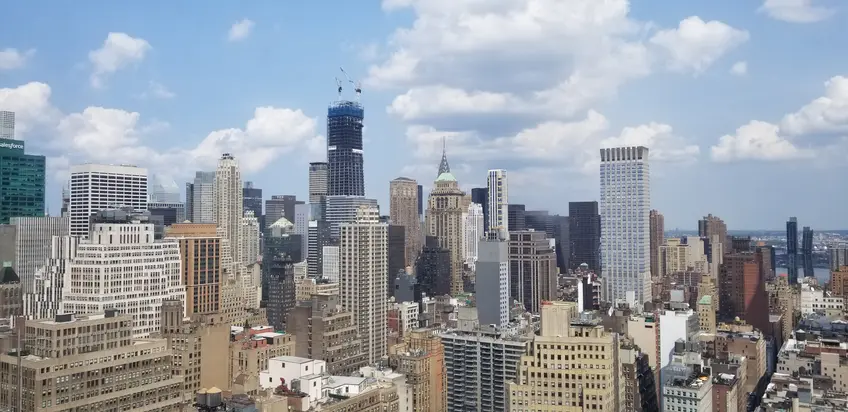 Credit: Vitali Ogorodnikov / CityRealty
Credit: Vitali Ogorodnikov / CityRealty
A second tower crane rose atop One Vanderbilt on Thursday, May 30th, signaling a major shift in the structural construction progress toward its final phase. On Wednesday, construction workers braved wind and drizzle as they hoisted the turntable and operator cab atop the vertical tower mast, which was assembled a few days prior. The crane jib pierced the low cloud cover by Thursday, just before sheets of driving rain started pouring in the evening.
As the skies cleared by Friday morning, New Yorkers awoke to a full view of the second tower crane atop the building pinnacle. The preceding crane sits near the center of the tower’s core, ideally positioned for assembling the bulk of the tower’s office floors. By contrast, the new crane perches at the tower’s southeast corner, where it would not get in the way of assembly of the sloping crown and centrally-located spire.
 Credit: Vitali Ogorodnikov / CityRealty
Credit: Vitali Ogorodnikov / CityRealty
In October 1929, riveter gangs consulted intricate blueprints for the complex steelwork cone atop the Chrysler Building, which stands just a few hundred feet east of One Vanderbilt. Despite its delicate nature, the work was done at a frenzied pace in order to beat 40 Wall Street, in progress in Downtown, for the title of the world’s tallest building.
In his 2003 book “Higher,” author Neal Bascomb describes a clandestine process where architect William Van Alen and an elite team of engineers and builders assembled a secret spire within the tower cone, which would be raised on hydraulic jacks to decisively clinch the coveted champion crown. Bascomb likened the procedure to a butterfly emerging from a cocoon.
Eighty-nine-and-a-half years later, One Vanderbilt is a contender in another skyline-redefining skyscraper race. Though the building’s 1,401-foot height is no secret, the climactic crescendo of this spectacle in the sky is yet to come.
 Credit: Vitali Ogorodnikov / CityRealty
Credit: Vitali Ogorodnikov / CityRealty


 6sqft delivers the latest on real estate, architecture, and design, straight from New York City.
6sqft delivers the latest on real estate, architecture, and design, straight from New York City.
